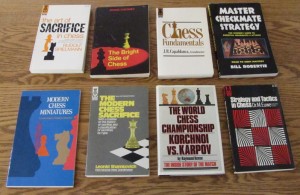Chess Coach Jonathan Whitcomb, of Murray, Utah (author of the book Beat That Kid in Chess), offers private and group lessons in the Salt Lake Valley. He offers a free introductory chess instruction session for home-school families and others in many areas of Utah, especially the SLV.
Chess playing has been found, from research, to be beneficial mentally, and it has been seen to relate to improved scholastic performance in young persons. Competing in the royal game also helps people improve socially, as long as it’s two humans playing against each other rather than one person against a computer.
Jonathan and Gladys Whitcomb came from Southern California, where they had a large family daycare in Long Beach. There they offered free chess lessons to children who were in their childcare.

Jonathan and Gladys Whitcomb now live in the Salt Lake Valley of Utah
.
Chess-Playing Skills of Children in Utah
Although the chess tutor Jonathan Whitcomb has observed the enthusiasm of some Utah kids for the game of chess, his research suggests they are not as highly ranked as are children in many other states. This has been shown by reference to the ratings of young players as calculated by the United States Chess Federation.
A recent rating page by the USCF shows the highest 100 American twelve-year-olds, and not one of them lives in Utah. The ratings ranged from 1740 to 2407, with seven of those children in the master range of 2200+.
Gatlin Black, who won the sixth-grade division of the Utah state elementary chess tournament early in 2016, had a rating of 1513 as of early June, 2016. He may be the best chess player of his age in Utah, but 1513 is far below what some twelve-year-olds are rated in states like the following:
- Connecticut
- New Jersey
- New York
- Massachusetts
- California
- Texas
- Virginia
- Ohio
- Illinois
- Oregon
- Washington state
- North Carolina
- Alabama
- Tennessee
- Michigan
- Nebraska
- New Mexico
- [etc.]
[By the way, by early September, 2016, Gatlin Black had obtained a higher rating with the United States Chess Federation: 1688.]
Whitcomb encourages free chess tournaments for children in the Salt Lake Valley and offers his help in organizing such events. He is available for volunteer service in schools and libraries in this part of Utah.
Chess Lessons in the Salt Lake Valley
Whitcomb can drive to your location in the Salt Lake Valley, with no travel charge for communities in the SLV (he lives in Murray, Utah). The standard charge for one-hour chess instruction sessions is only $25, and this includes many free materials. In fact, the first chess lesson includes one free copy of the beginner’s book Beat That Kid in Chess. Give him a call: 801-590-9692.
This chess coach will tailor your lessons to your own skill in the royal game, so you’ll be able to progress at your own pace and in your own way. You can also contact him by email and ask what you will about low-cost private individualized chess lessons.
###
.
Chess Tutor in Salt Lake Valley
When does a chess beginner most need a tutor for private lessons? Do at least two of the following fit your situation? . . .
Jonathan Whitcomb, of Murray, Utah, author of the new book Beat That Kid in Chess, is now offering private and group lessons.
Beat That Kid in Chess on Amazon
.



